…by putting the squeeze on mining waste
You may not be able to squeeze blood out of a stone but, by applying the right amount of ultrasound during processing, Jianhua (Jason) Du and colleagues from the Cooperative Research Centre for Contamination Assessment and Remediation of the Environment (CRC CARE) have been able to squeeze a considerable amount of fresh water from mining waste.
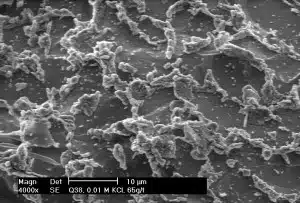
Honeycomb-like structure which retains significant amount of water in tailings before ultrasonic treatment. (Photo: Jason Du)
As well as conserving water the technique reduces the waste bulk, which could also save mining companies millions of dollars in operational costs and help postpone significant capital expenditure, Jason says. Jason is one of sixteen winners of the national 2010 Fresh Science program – highlighting the work of leading young scientists.
“When we looked at one of Rio Tinto’s mines in the Murray Darling Basin, we found our method could potentially save 436 megalitres of water a year. That’s more than 170 Olympic swimming pools back into the Basin’s water reserves – so that’s a win for the environment as well as lower costs for the company.”
Between 400 and 600 litres of water are needed to process each tonne of ore. As a result, water makes up between 60 and 95 per cent of the more than 10 billion tonnes of tailings that mineral processing produces each year worldwide.
Some of this liquid is recovered by letting the solids settle in tailings ponds, a process that is aided by the addition of thickeners. But these are low in efficiency. What Jason and his colleagues found is that efficiency can be increased by pumping in the right amount of ultrasonic energy at the right time.
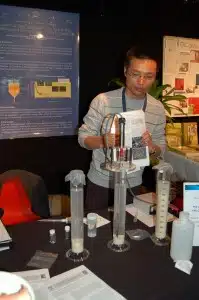
Jason demonstrates the technique at CRC CARE CleanUp 09 conference. (Photo: Meredith Loxton, CRC CARE)
Although in their laboratory-scale trial the technique successfully increased the output of solids only by about 4 per cent by weight, on the scale of a large mine this represents a huge amount of water.
“At one of Rio Tinto’s mines outside Australia, we calculated the saving to be about 3.5 gigalitres (or 3,500 megalitres) a year, worth more than A$5.5 million to the company.”
Jason and his colleagues, based at the University of South Australia, used an electron microscope to examine the structure of the solids which formed after flocculants were introduced in the thickener. They found a network similar to honeycomb in which the water was trapped. The ultrasonic energy disrupts this network and leads to a denser aggregation. “It’s like shaking up a jar full of flour in a way which causes the flour to compact down,” Jason says.
The less water incorporated during processing also means the smaller the landfill site needed for containment. Together with lesser amounts of equipment and time needed to manage the disposal process, this lowers costs even further.
Jason’s work is supported by the Australian Research Council, CRC CARE, and Rio Tinto. He is one of 16 early-career scientists presenting their research to the public for the first time thanks to Fresh Science, a national program sponsored by the Australian Government. His challenges so far have included presenting his discoveries in verse at a Melbourne pub.
Further information:
- Jason Du, Jianhua.Du@postgrads.unisa.edu.au
- For further information on research by CRC CARE, contact the CRC’s Communication Manager, Peter Martin, peter.martin@crccare.com

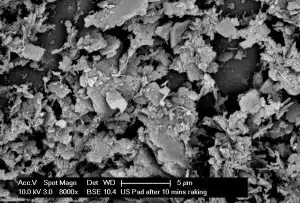
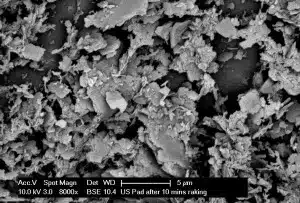


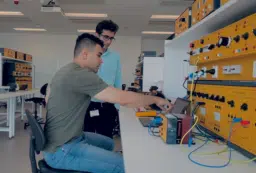

 Fresh Science is on hold for 2022. We will be back in 2023.
Fresh Science is on hold for 2022. We will be back in 2023.